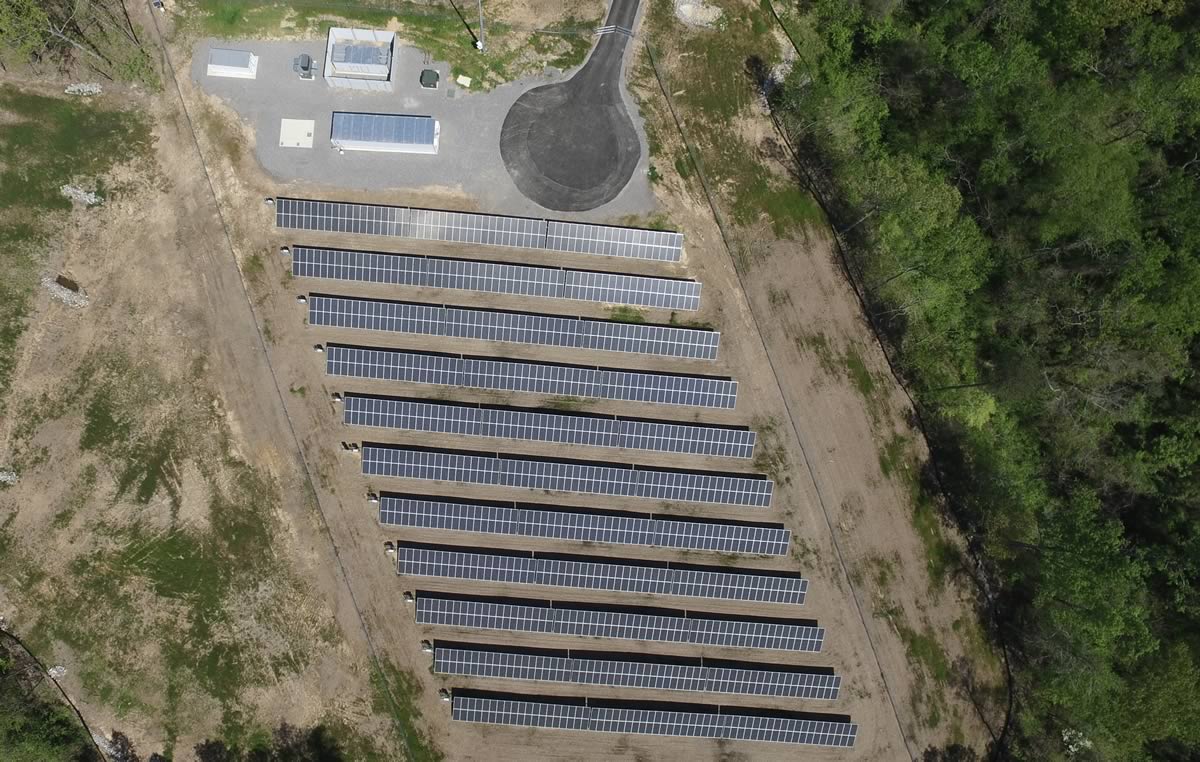Imagine what the energy providers of the future might look like. In the next decade, will electric utilities integrate distributed energy resources (DERs) into their portfolios? How will DERs impact the electric grid? Can DER integration be accomplished to everyone’s benefit?
In 2015, Alabama Power, in partnership with Southern Company Research & Development, started asking important questions about what 2030 or 2050 might look like for the energy industry. Through those conversations, the Smart Neighborhood® initiatives were developed.
Alabama Power’s Smart Neighborhood is the first intelligent community of its kind in the Southeast. It consists of a residential development with 62 high-performance homes in Hoover, Alabama, that is served by the Shannon-Oxmoor Microgrid, comprised of 330kW solar, 360kW/680kWh energy storage solution and a 400kW (360kW prime) natural gas generator.

The microgrid was commissioned in December 2017 and home construction was completed in July 2018. The system was modeled post-installation with HOMER Grid software.
The integration and interaction between the community’s homes and various distributed energy resources is facilitated by an open-source software called Complete System-Level Efficient and Interoperable Solution for Microgrid Integrated Controls (CSEISMIC), developed by the US Department of Energy’s Oak Ridge National Laboratory.
“With the Smart Neighborhood initiatives, Southern Company is learning how to best design, implement and learn from the distributed energy systems being deployed in our territory,” explains Olugbenga Ajala of Southern Company. “The Alabama Power Smart Neighborhood is the first residential community-scale microgrid in the Southeast – this project provides great research experience and allows us to quickly learn and adapt as the utility industry continues to change.”

Each smart home features emerging energy-efficient technologies, including a variable-capacity, low-temperature HVAC unit, and a heat pump water heater. The neighborhood’s intelligent integration technology communicates with the heating, air conditioning, and water-heating systems in the Smart Neighborhood to gather data. With analysis, that energy usage and performance information helps Alabama Power better understand how to integrate new technologies onto the electric grid, while improving both reliability and occupant comfort.
When U.S. Secretary of Energy Dan Brouillette, visited the Smart Neighborhood recently, he explained that, “Alabama Power’s Smart Neighborhood is paving the way for more energy-efficient, smart homes in America. The homes built in this community are 50 to 60% more efficient than a standard home, and researchers at the Department of Energy have played a large part in developing and deploying these innovative technologies.”

Insights gained from the Alabama Power Smart Neighborhood have been incorporated into similar projects – the Georgia Power Smart NeighborhoodTM and Georgia Power’s Tech Square Microgrid.
According to Ajala, the Georgia Power Smart Neighborhood features 46 technology-enhanced homes in Atlanta served by Georgia Power and supplemented by rooftop solar and in-home battery energy storage. The homes are equipped with the latest energy technologies and will help the utility better understand the integration between rooftop solar, in-home battery storage and the traditional electric grid as well as how homeowners interact with their connected devices and high efficiency technologies.
Another project, Georgia Power Microgrid for Technology Square, will allow Georgia Tech students and professors to gather data on controllers, cybersecurity devices and energy economics, while offering insights on how microgrids can effectively integrate into and operate as a part of the overall electrical grid. The microgrid will also provide insight on how smart energy management systems interact with the grid to achieve optimal energy usage. The installation will include fuel cells, battery storage, diesel generators, and a natural gas generator, but it will be adaptive to new and additional DERs. It is designed to also accommodate microturbines, solar panels and electric vehicle chargers in the future.
By collecting data and providing a testbed for innovative technologies, these three collaborative projects will answer questions of integration, impact, and benefits of DER, while helping determine the energy architectures of the future.

UL Solutions HOMER Grid is a market-leading solar-plus-storage software tool for designing grid-tied distributed energy systems. With an integrated utility tariff database and a new module for electric vehicle charging stations, it optimizes peak shaving to help commercial and industrial utility customers lower their demand charges. HOMER Grid can model projects with wind and combined heat and power as well as islanded systems, helping users improve their resiliency. Explore your opportunities with HOMER Grid during a complimentary trial. Learn more and download your complimentary trial.
